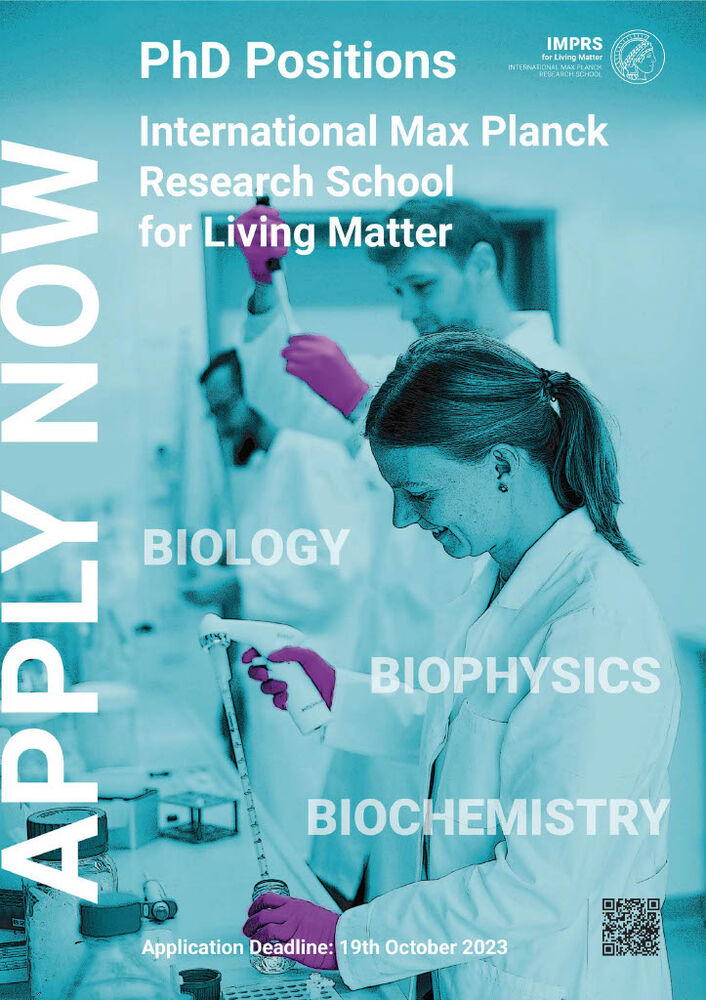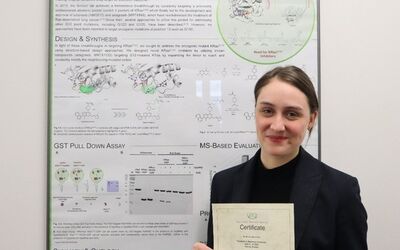News & Events
Lecture Series - Modern Drug Discovery - WS 2023/2024

The agenda for our upcoming Lecture Series on "Modern Drug Discovery" is there!
See the dates and times by clicking on the banner below
PhD Positions

The deadline is approaching fast! This is your chance to apply for exciting project. Follow the link to the homepage (https://www.imprs-lm.mpg.de/) or to the application page (https://www.imprs-lm.mpg.de/index.php/join/apply)
Poster award for Tonia Kirschner

At this year's Frontiers in Medicinal Chemistry meeting in Vienna, organized by the German Chemical Society (GDCh), Tonia Kirschner from the Rauh group was honored with an award for her poster presentation.
Ms. Kirschner presented her results on novel covalent inhibitors for the KRas G13C mutant, which is relevant in cancer development and remains largely unexplored. Within their previous PhD work, structure-based drug design was used to obtain small molecule compounds that bind for the first time into the allosteric switch-II pocket of KRas G13C and react covalently with the cysteine residue.
The annual international symposium provides exchange for academia and industry on recent developments, new approaches and cutting-edge technologies in the field of medicinal chemistry and drug discovery.

